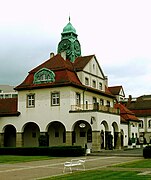
Friedberg is a town and the capital of the Wetteraukreis district, in Hesse, Germany. It is located 26 km north of Frankfurt am Main. In 1966, the town hosted the sixth Hessentag state festival, in 1979 the 19th.
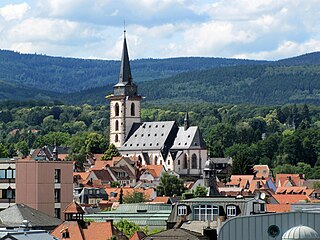
Oberursel (Taunus) (German:[oː.bɐ.ˈʊʁ.zl̩] ) is a town in Germany and part of the Frankfurt Rhein-Main urban area. It is located to the north west of Frankfurt, in the Hochtaunuskreis county. It is the 13th largest town in Hesse. In 2011, the town hosted the 51st Hessentag state festival.
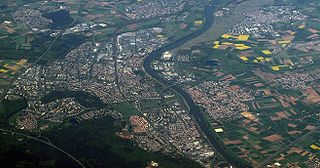
Rüsselsheim am Main is the largest city in the Groß-Gerau district in the Rhein-Main region of Germany. It is one of seven special status cities in Hessen and is located on the Main, between Frankfurt and Mainz, only a few kilometres from its mouth in Mainz. The suburbs of Bauschheim and Königstädten are included in Rüsselsheim. Rüsselsheim has attained international recognition through the presence of the German car company Opel.
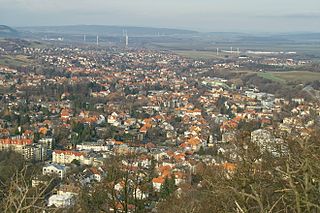
Bad Harzburg is a spa town in central Germany, in the Goslar district of Lower Saxony. It lies on the northern edge of the Harz mountains and is a recognised saltwater spa and climatic health resort.

Twistetal is a municipality in Waldeck-Frankenberg in northwest Hesse, Germany, southwest of Bad Arolsen.
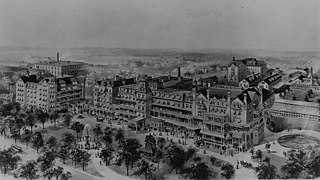
The Battle Creek Sanitarium was a world-renowned health resort in Battle Creek, Michigan, United States. It started in 1866 on health principles advocated by the Seventh-day Adventist Church and from 1876 to 1943 was managed by Dr. John Harvey Kellogg.

Biedenkopf is a spa town in western Hesse, Germany with a population of 13,491 (2020).

Riedstadt, with its municipal area of 73.76 km2 is Groß-Gerau district's biggest town by land area. It lies in Hesse, Germany, about 12 km southwest of Darmstadt.

Schwalmstadt is the largest town in the Schwalm-Eder district, in northern Hesse, Germany. It was established only in 1970 with the amalgamation of the towns of Treysa and Ziegenhain together with some outlying villages to form the town of Schwalmstadt.
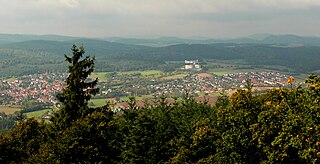
Bad Zwesten is a municipality in the Schwalm-Eder district of Hesse, Germany.

Raunheim is a town in Groß-Gerau district in Hesse, Germany and a part of the Frankfurt Urban Region as well as the Frankfurt Rhein-Main Region.

Lautertal is a municipality in the Vogelsbergkreis in Hesse, Germany.

Schwalmtal is a municipality in the Vogelsbergkreis in Hesse, Germany.
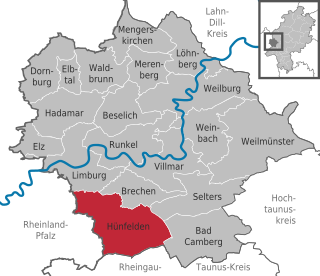
Hünfelden is a municipality in Limburg-Weilburg district in Hesse, Germany. Hünfelden lies on the Hühnerstraße, an historic part of Bundesstraße 417.
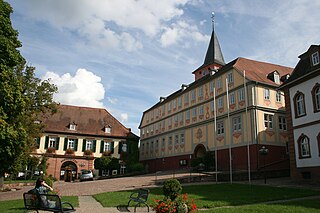
Bad König is a town and resort (Kurort) in the central Odenwald in the Odenwaldkreis (district) in Hesse, Germany, 29 km southeast of Darmstadt.

Bad Sooden-Allendorf is a spa town in the Werra-Meißner-Kreis in Hesse, Germany.

Gedern is a town in the Wetteraukreis district in Hesse, Germany, and historically belongs to Oberhessen. It is located 38 kilometres (24 mi) northeast of Hanau at the foot of the Vogelsberg, one of the largest inactive volcanoes in Europe.
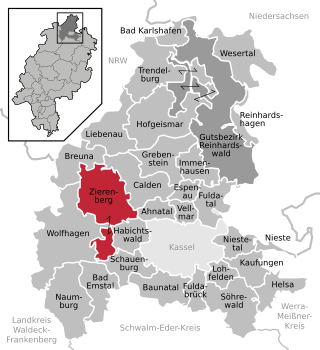
Zierenberg is a town in the district of Kassel, in Hesse, Germany. It is located 19 km east of Bad Arolsen, and 15 km northwest of Kassel on the German Timber-Frame Road.
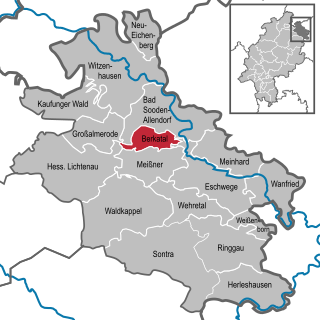
Berkatal is a municipality in the Werra-Meißner-Kreis in Hesse, Germany.
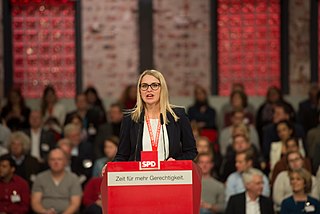
Natalie Pawlik is a German politician (SPD) and member of the German Bundestag since October 2021. Since 14 April 2022, Pawlik has been the Commissioner for Matters Related to Ethnic German Resettlers and National Minorities.






